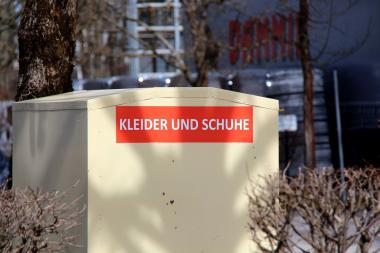Outlast: Verbesserte Isolierungseigenschaften durch Aerogel in Viskosefasern
Der Kompromiss zwischen leichtem Produkt-Design und effektiver Wärmeisolierung ist eine Herausforderung für die Bekleidungsindustrie. „Das Gewicht spielt eine entscheidende Rolle bei Funktionskleidung“, so Volker Schuster, Leiter Forschung und Entwicklung bei Outlast Technologies. „Schwere, voluminöse Jacken können unangenehm zu tragen sein und die Atmungsaktivität einschränken, während leichtere Alternativen oft nicht ausreichend isolieren.“
Um dieses Problem zu lösen, hat die Outlast Technologies GmbH ein Verfahren entwickelt, die es ermöglicht, das extrem leichte und isolierende Material Aerogel direkt in Viskosefasern zu integrieren. Diese Innovation verbessert die Isolierungseigenschaften erheblich, ohne das Gewicht zu erhöhen, und ermöglicht so ultraleichte und zugleich leistungsstarke Kleidung. Ein ISO-zertifiziertes Labor hat die Isolierleistung von Viskose-Watten mit und ohne Aerogel-Anteil vergleichen. Die Ergebnisse zeigten eine 35 Prozent bessere Isolierung der Aerogel-Watten.
„Aerogel ist ein Feststoff auf Silikatbasis, der aus Quarzsand gewonnen wird und eine einzigartige Isolierwirkung besitzt“, erklärt Schuster. Die besondere Isolierleistung von Aerogel ist auf seine extrem poröse Struktur zurückzuführen, die zu 98 Prozent aus Luft besteht – dem idealen Isolationsmaterial. Diese besonderen Eigenschaften haben Aerogel seit vielen Jahren zu einem unverzichtbaren Stoff für NASA-Weltraummissionen gemacht.
Outlast ist dank eines neuen, patentierten Verfahrens gelungen, dieses Material für Bekleidung nutzbar zu machen. Das Unternehmen hat dabei einen besonders hohen Aerogel-Anteil erreicht, der 50 Prozent des Materialvolumens ausmacht. Diese hohe Konzentration ermöglicht es, die Eigenschaften von Aerogel voll auszuschöpfen, und eröffnet vielversprechende Perspektiven für die Entwicklung leichter, nachhaltiger und zugleich hoch isolierender Fasern sowie Textilien.
Outlast hat seine patentierte Aersulate-Technologie bereits erfolgreich eingesetzt, indem das Material auf textile Vliese aufgebracht wurde. Während diese Stoffe hauptsächlich für technische Anwendungen entwickelt wurden, eignen sich die angenehm weichen Aersulate-Fasern als Füllmaterialien für Premium-Sportbekleidung, Jacken, Skihosen und Arbeitskleidung an.
Im Gegensatz zu herkömmlichen Isoliermaterialien wie Schäumen, Watten oder Vliesstoffen, die auf eingeschlossene Luft zur Wärmeisolierung setzen, bindet Aerogel die Luft im Inneren der Faser selbst. Dadurch bleiben die Isoliereigenschaften der Aersulate-Produkte auch unter Druck erhalten, während herkömmliche Materialien dann oft an Effektivität verlieren. So kann auch in stark beanspruchten Bereichen wie unter Rucksackriemen oder an Knie und Ellenbogen konsistente und zuverlässige Isolierung gewährleistet werden.
Outlast Technologies GmbH

































